Blog
-
Saviour: Your questions answered

Saviour is amazed by your questions from around the world.
Last Thursday, we followed ten-year-old orphan Saviour for the day on her 14km round journey to school. We asked you to send us questions for her by Twitter and email. Here’s the top five answers.
What do you like most about school?
I like coming to school to see all my friends. I also like learning things.
What do you want to be when you grow up?
I want to be a teacher, like Mrs Haloba.
What’s your favourite lesson?
I like English the most, and also maths and CTS (Creative Technical Skills).
What happened to your family?
My mother and father died when I was just a baby. Now I live with my Uncle and my Grandmother. She’s not here at the moment, but is coming back soon.
What toys do you play with at home?
I have a ball which I made myself out of plastic bags. I take it into the fields behind my house to play.
0 comments -
Saviour’s story: A day in the life of a 8-year-old orphan. (3/3)
On Thursday we followed 10-year-old orphan Saviour through a typical day. The final third is a mirror image of the morning. A 7km walk home, where she is visibly tiring, followed by a small meal of nshima and more chores. By the time she is finished it’s 6pm and the light is rapidly fading. There is no time for homework before bed.
Photography by Brenda Veldtman.

Just after 3.15pm the children start the 7km walk home.

Despite the distance that lies ahead they are still in high spirits. They love having the chance to go to school.

As a 10-year-old Saviour should be in grade 4, but it's only recently that she has become strong enough to do the 14km round trip every day.

That's 70km of walking per week. Or 2,800km in a school year.

2 hours after they set off the children are back at Chibwe Farm and it's time for dinner.

The children are glad to have a second meal of the day. In a few months time the food from the harvest will be very low.

Yet more chores.

The family enjoy some quality time together around the remains of the fire.

As the last of the light starts to disappear an exhausted Saviour heads to bed.
At a quick glance the school at Simakakata looks quite good. It’s a borrowed farmhouse. A little dark perhaps, but there are four walls and a roof that doesn’t leak too much. But there is a big problem. The community doesn’t own the building and the organisation that does wants it back.
Simakakata desperately needs a new school.
A total of £5,200 is needed to fund the first classroom for Saviour and her friends. Once the community has started construction, we’ll post regular updates so you can see your money in action. Click here if you want to make a donation.
-
Saviour’s story: A day in the life of a 8-year-old orphan. (2/3)
On Thursday we followed 10-year-old orphan Saviour through a typical day. Her walk to school takes 2 hours. And when she gets there her classes are Maths, Creative and Technical Skills (CTS), English, Tonga and Social Development Studies. This is part two of her photo story.
Photography by Brenda Veldtman.

It's boiling hot and walk to school takes the children just over 2 hours. In that time they drank no water.
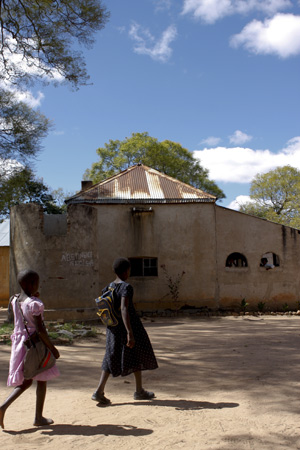
Saviour and her friends finally arrive at school. The temperature is 27 degrees in the shade.
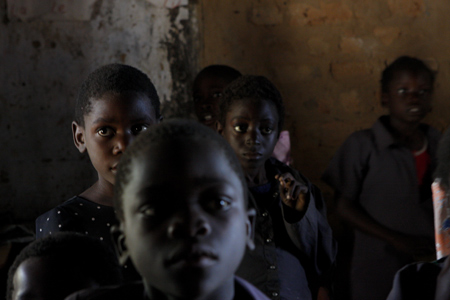
Saviour joins her grade 1 classmates and files into class for the first lesson of the day.
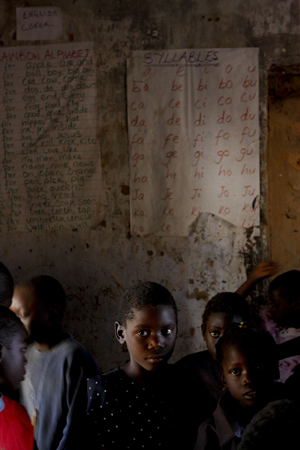
There are no teaching aids for the walls. Everything has to be painstakingly written out by hand.
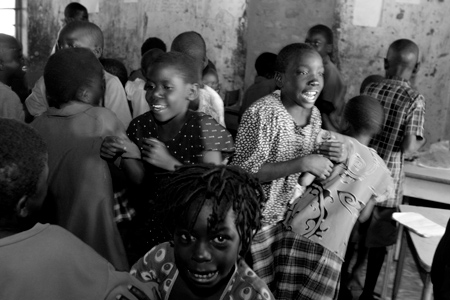
The children head for their desks.
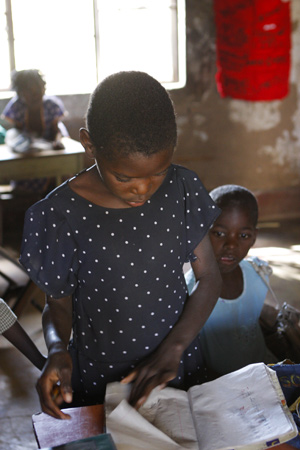
The first lesson of the day is Maths.
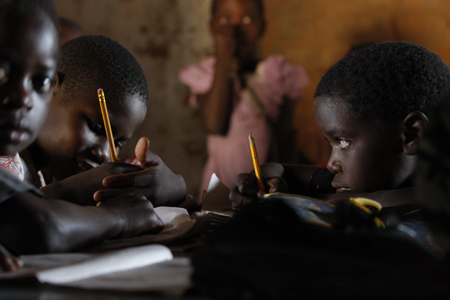
Time for the dreaded test. No cheating please!
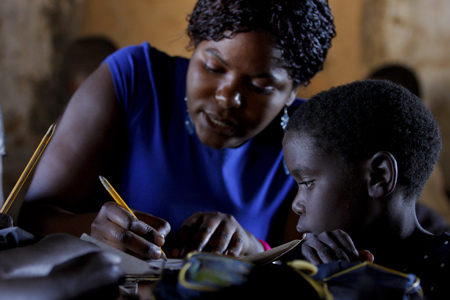
Beatrice gives Saviour a little one-to-one tuition.
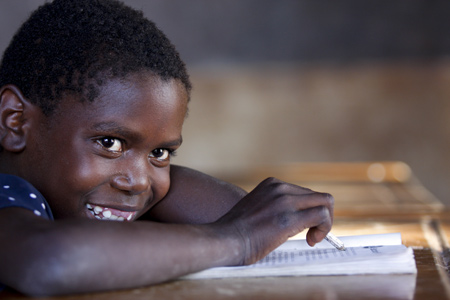
Saviour loves having the opportunity to go to school.
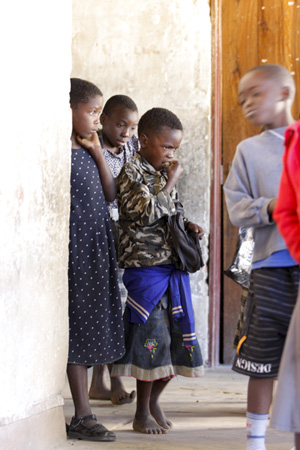
3 hours later Saviour's lessons are over for the day.
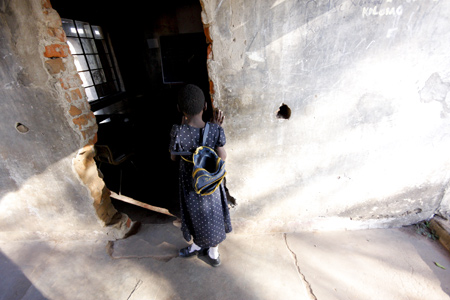
Saviour waits to get a letter off Headmaster George. Doors are seen as luxury at Simakakata.

The classrooms at Simakakata look quite good. But there is a major problem. The school is a borrowed farmhouse and the owner wants it back.
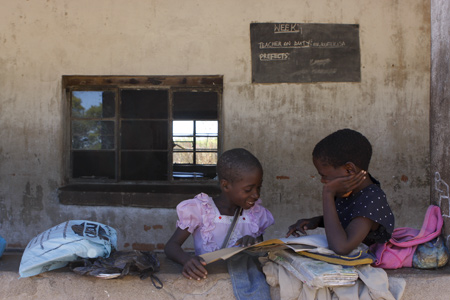
Saviour and Valencia find half an hour to do their homework before they set off home. They still have chores to do and it will be too dark to do any later.
-
Saviour’s story: A day in the life of a 8-year-old orphan. (1/3)

Photographs by Brenda Veldtman and Steve Heyes.
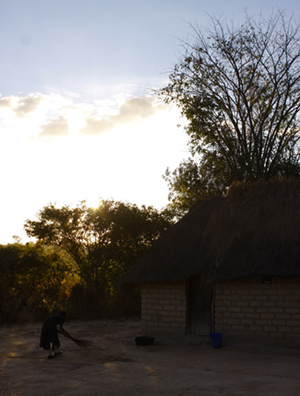
Saviour lives on Chibwe farm. She gets up before 7am to do her chores. Here she is keeping an eye out for snake tracks.

Then it is time to start preparing breakfast.

Nshima is on the menu this morning. The same as every morning.

While the food slowly cooks Saviour and her cousin Valencia grab a bucket and a jerry can and run off into the bush.
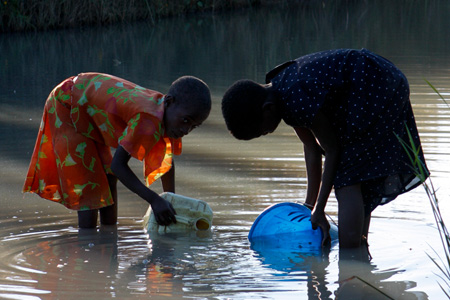
We find them half a kilometre away, collecting water from a nearby stream. It's filthy. We later learn that animals drink from the same water source.

Saviour struggles to lift the bucket onto her head.
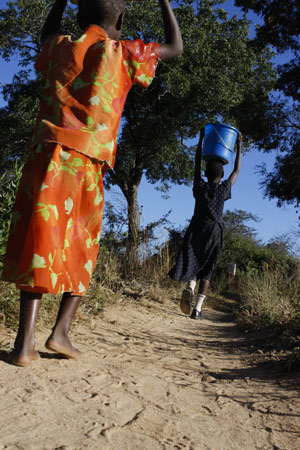
But she manages and the girls head back home.

Aunt Vivian has finished preparing breakfast. Sorry dog, there won't be any left overs.
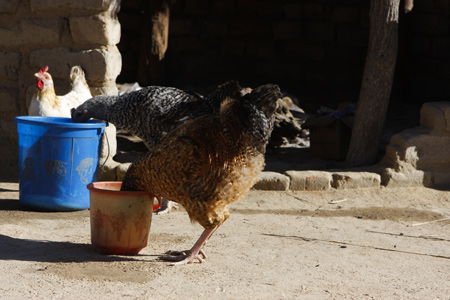
But it doesn't take long for the chickens to spot the water.
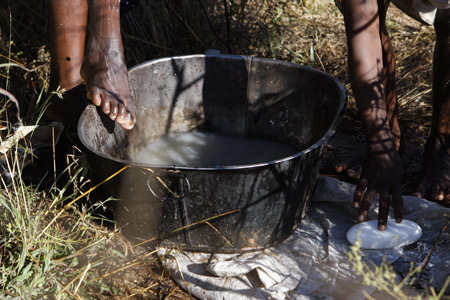
Saviour heads back into the bush for a quick wash.

Then the children begin the 7km walk to school as a cow from the community farm looks on.
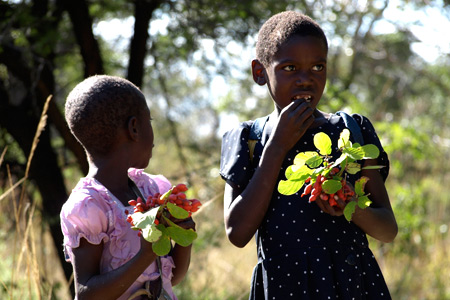
Saviour picks some muchinga-chinga berries to snack on. It's just two months after the rainy season ended and the fruit is plentiful.
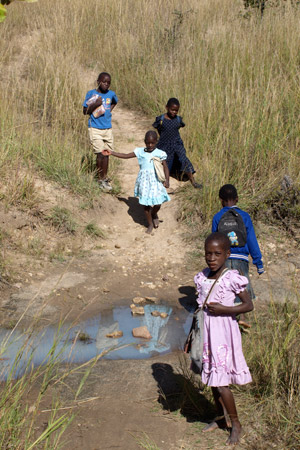
The children take a short rest by a stream. At the height of the five month rainy season it can become uncrossable.
Click here to see part 2 of the story.
-
Saviour’s story: A day in the life of a 10-year-old orphan
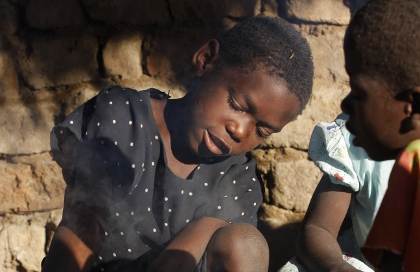
Saviour in her community just before she set off for school.
Saviour is a 10-year-old girl from Chibwe Farm. She lives with her Uncle Kennedy Mantantilo, his wife Vivian and their four children, Irene, Valencia, Chipo and baby Chileleko.
Saviour is in grade one at Simakakata community school. Until now, she was too small to walk the 14km round trip every day for class. Her family kindly agreed to let us spend the day with Saviour and see what a typical 24hours for the girl is like.
Here is a live blog of her day. Click here to see the story in pictures.
06:50
The farm is the closest thing we’ve seen to a recognisable village structure so far. Around 100 people live here, half of which are children of school age. Over 30 of the children go to school in Kalomo, 14KM away. They live in a boarding house the community owns in town, and return maybe once every two weeks to see their parents. While they’re away, they cook and care for themselves.
07:00
Saviour and her friends would normally set off walking now. Their lessons start at 11am, but it’s too hot later in the day and they don’t want to be late. Before we leave today, though, Saviour shows us her morning chores. She sweeps the yard, looking for dust blown in front of the shack and snake trails, then washes a few pans from the night before.
07:15
Saviour walks 500m to a small stream which even now, after the rainy season, might as well be stagnant. The villagers wash their clothes here, and the cattle drink from the same place. Saviour fetches a bucket from the supply to make nshima for breakfast. A chicken drinks from one of the children’s cups which has been left unattended.
Saviour and her cousin Irene walk into the tall grass to wash in water collected from the stream and dress for school.
09:00
The villagers of Chibwe spend some time talking to us and explaining how the farm works, so we’re very late setting off for school. George, the headmaster at Simakakata has joined us for the walk, to look after the children and help explain things as we go along. Usually, the five children - Saviour, Valencia, Irene, Sharon and Alex - would walk unaccompanied.
09:30
The children pick some muchinga-chinga berries to snack on. The small red berries are sweet, but with a not unpleasant sour aftertaste - like a Haribo sweet.
09:40
The children start chasing each other and playing games. George explains that the average teacher wage in Zambia is 1.8million Kwacha per month, or £200. Before he chose to come to Simakakata, he worked in a school with running water, electricity and proper cooking facilities. He’s here because he wants to be, and other teachers won’t work in these areas for the salary.
10:00
George explains that there are around 50 elephants loose in the area, which they think have come up from game parks in Zimbabwe, where they’re being hunted for food. He’s worried for the safety of the children who walk this far every day.
10:20
We’ve covered about 5km. We’re fairly sure the children would be moving faster without us. Irene has stolen Steve’s sunglasses.
10:30
George sees a young child leading a cow through a cornfield and calls him over. The child should be at George’s school, the child says he has no clothes that are clean enough to attend and needs to work.
11:00
For the last 500m we try taking our shoes off to see how hard the ground is. Of the five children, three are barefoot. We notice more sharp pebbles, ants and the occassional piece of broken glass than we did before.
11:10
We arrive at school, slightly late, but headmaster George says it doesn’t matter. He is happy to do anything that will help raise badly needed funds for the school. Saviour goes straight into a maths class, where she’s learning to write the nnumbers 1 to 4.
11:30
The classes for grade 1 are just half an hour long. Saviour’s second class is CTS - Creative and Technical Studies. Music, art, home economics are all taught in this class.
12:30
The children break for lunch. Those who’ve brought food eat. Saviour hasn’t. They play in the yard and throw sticks into the nearby tree to knock out the fruit.
13:30
The last class of the day is SDS - Social Development Studies. The children sing “Head, shoulders, knees and toes” to learn the English names for different parts of the body. There are over 70 languages in Zambia (popn 11 million) so English is a vital lingua franca.
14:30
The end of day bell rings and the children sing a song about the end of the school day. They spend half an hour playing in the yard before the long walk home.
15:10
Saviour and her cousins start the long walk back. To pass the time we start to sing songs - the children sing some in Tonga, and we teach them some English ones.
15:40
A woman whose house we passed earlier stops us to talk to George about writing a letter for her, Saviour and her cousin Irene run off to the stream behind her house and come back with a bottle full of filthy ditch water.
16:30
We pass over a dry river bed, the children spot a pig which has escaped from a nearby farm and try to shoo it back. Unlike goats and cattle, pigs are usually kept indoors, so it’s unusual to see them roaming.
17:20
We arrive back home at Chibwe. The children are all still full of energy, despite having walked for four hours today, and not having eaten anything other than muchinga-chinga berries since breakfast. Saviour eats a snack of cold nshima, the corn starch dough which is the staple diet here. It’s leftover from the rest of the family’s lunch.
17:30
It’s chore time, and Saviour washes the pots from the preparation of the bean stew that’s cooking in the yard.
17:40
The family sit down to eat. It’ll be dark by 18.00, and with no candles there’s no time for any homework to be completed before the light is lost and it’s time for bed.
Do you have any questions for Saviour?
If you have any questions for Saviour, please let us know via Twitter or leave a comment below.
Saviour’s story can also been seen in photographs via this link.